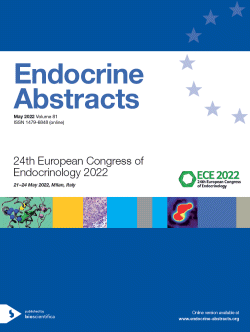Searchable abstracts of presentations at key conferences in endocrinology

European Congress of Endocrinology 2022
Milan,
Italy
21 May 2022 - 24 May 2022

The 24th European Congress of Endocrinology (ECE) and the Italian Society of Endocrinology look forward to welcoming you to Milan. ECE 2022 returns for a four day, six parallel session festival of endocrine science. You can join us In person in Milan, Italy OR Live @Home online!



